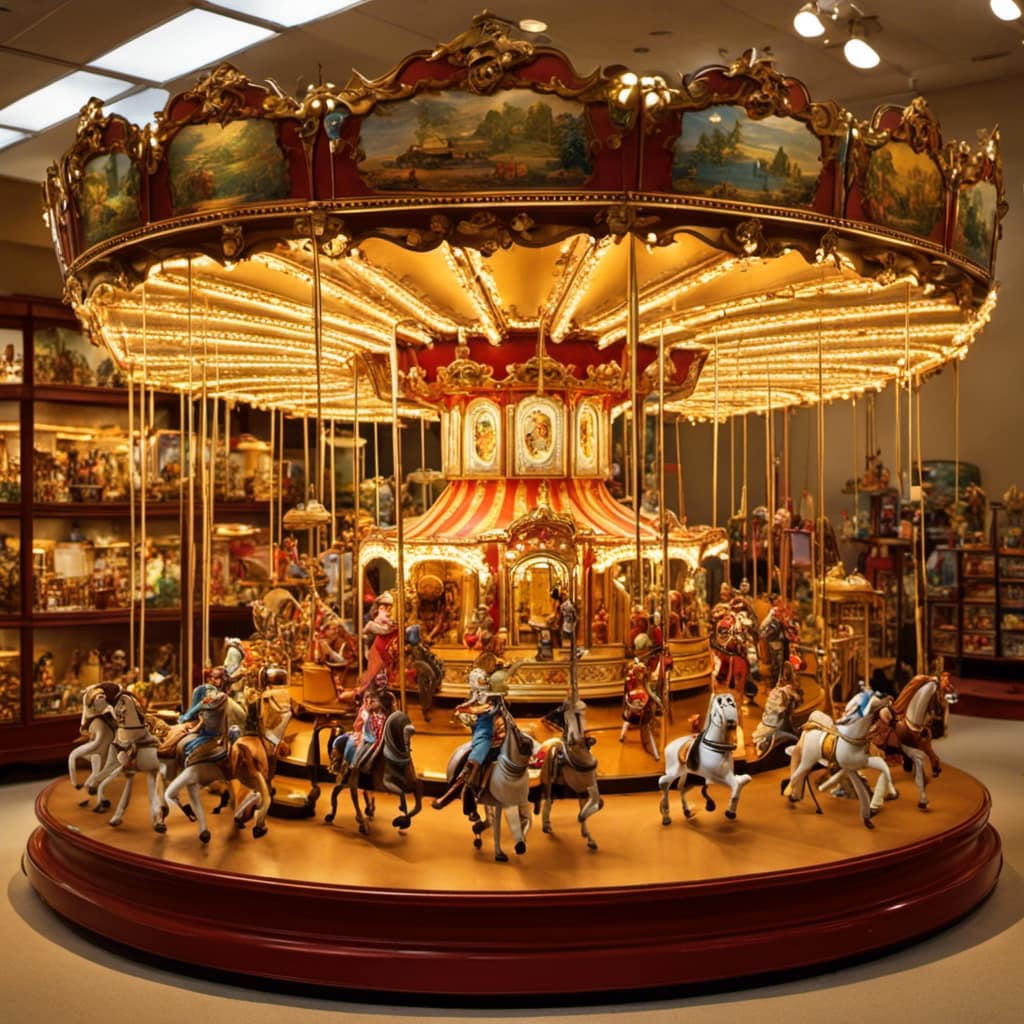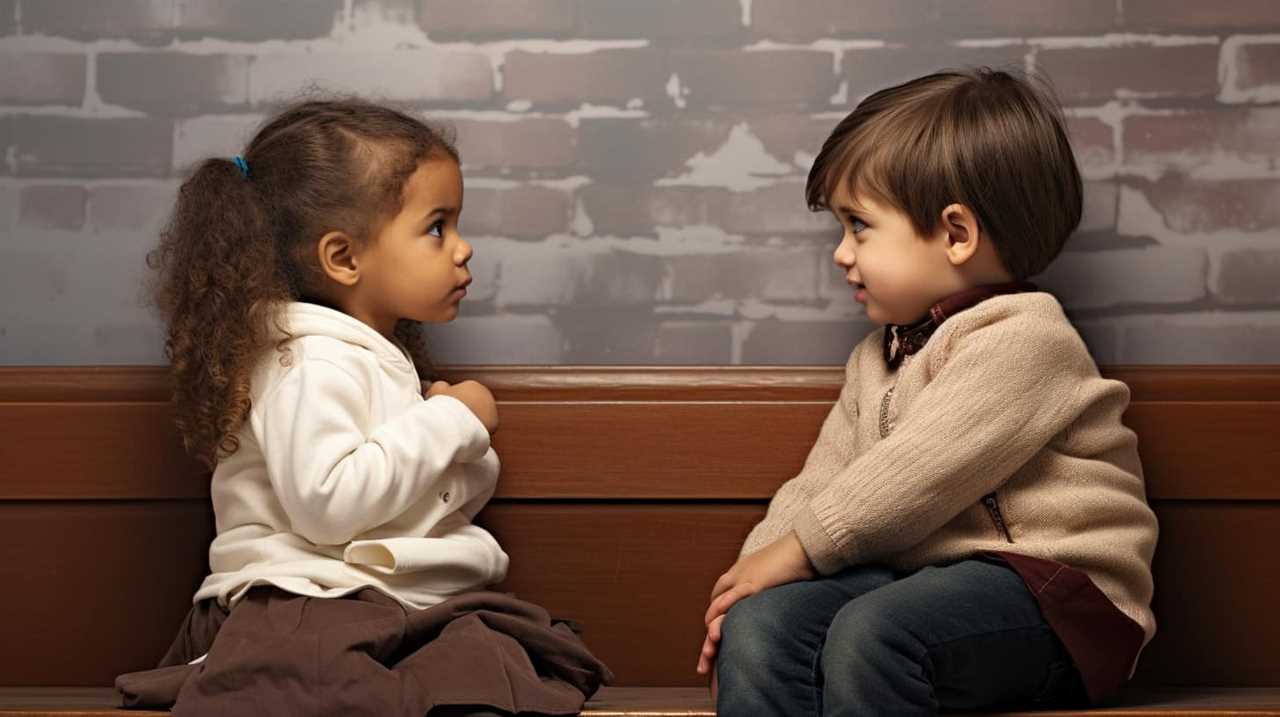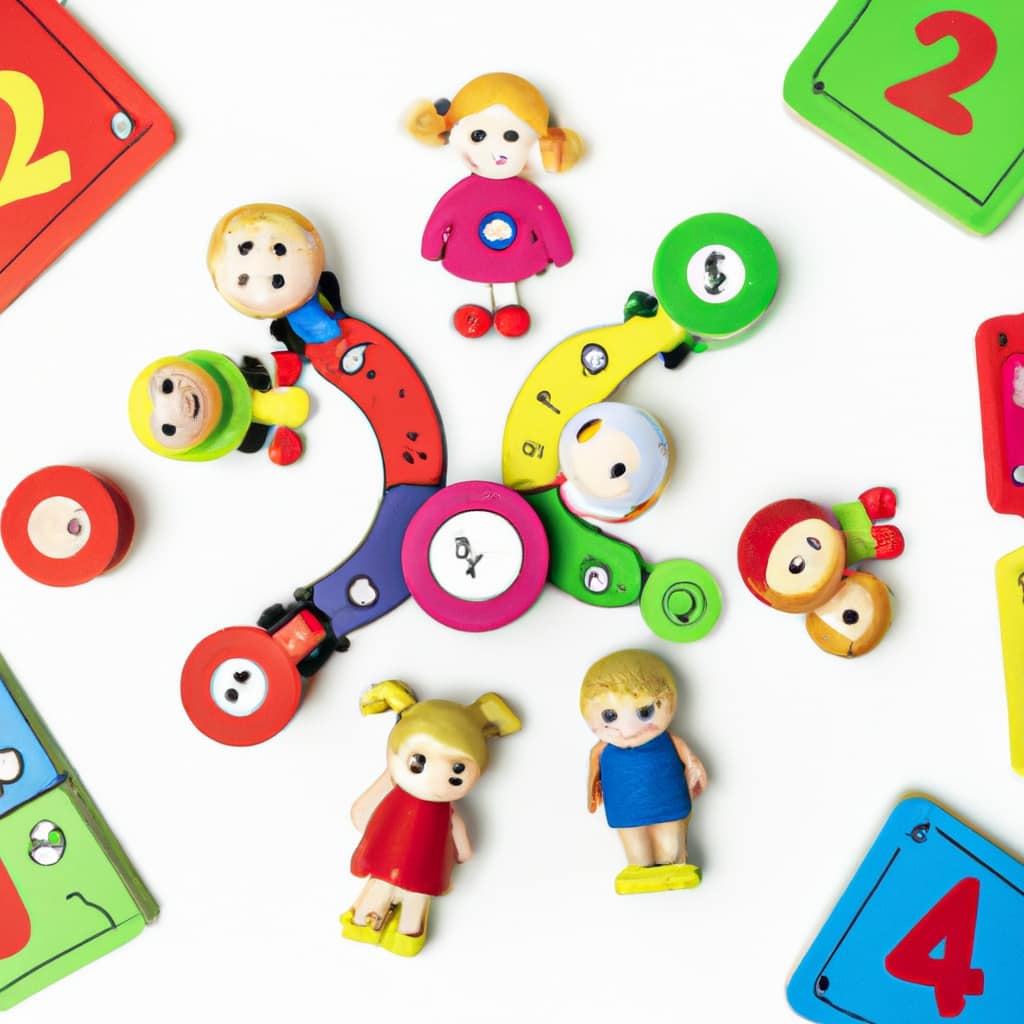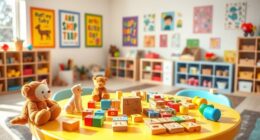I have always been fascinated by the world of Waldorf toys, particularly their commitment to sustainability. Did you know that over 90% of Waldorf toys are made from natural materials?
In this article, we’ll explore the materials, tools, and philosophy behind creating eco-friendly Waldorf toys. We’ll discuss the importance of choosing responsibly sourced wood and non-toxic paints, as well as the essential woodworking tools needed for precise craftsmanship.
Join me as we delve into the world of Waldorf toys and discover how they foster creativity, imagination, and a love for the environment.
Key Takeaways
- Use eco-friendly materials like responsibly sourced wood, non-toxic paints, and safe materials for children and the environment.
- Have essential woodworking tools like coping saw, chisels, drill, and carving knives, as well as measuring instruments like ruler, tape measure, and square for precise woodworking.
- Understand the philosophy of Waldorf toys, which emphasizes natural materials, open-ended play, and sensory development.
- Promote imaginative play, creativity, and sensory development with Waldorf toys made from natural materials, such as wood, wool, and cotton.
Importance of Eco-Friendly Materials in Waldorf Toys
I prioritize the use of eco-friendly materials in Waldorf toys to ensure the safety of children and promote a healthier environment.
One important aspect is using non-toxic paints for Waldorf toys. These paints are free from harmful chemicals, such as lead and phthalates, which can be dangerous when ingested or inhaled by children. By using non-toxic paints, we can provide a safer play experience for children while also reducing the environmental impact.
Another benefit of eco-friendly materials in Waldorf toys is the use of responsibly sourced wood. Wood from sustainable forests, such as birch or maple, is known for its strength and longevity. By choosing responsibly sourced wood, we support sustainable forestry practices and reduce the demand for materials that contribute to deforestation.
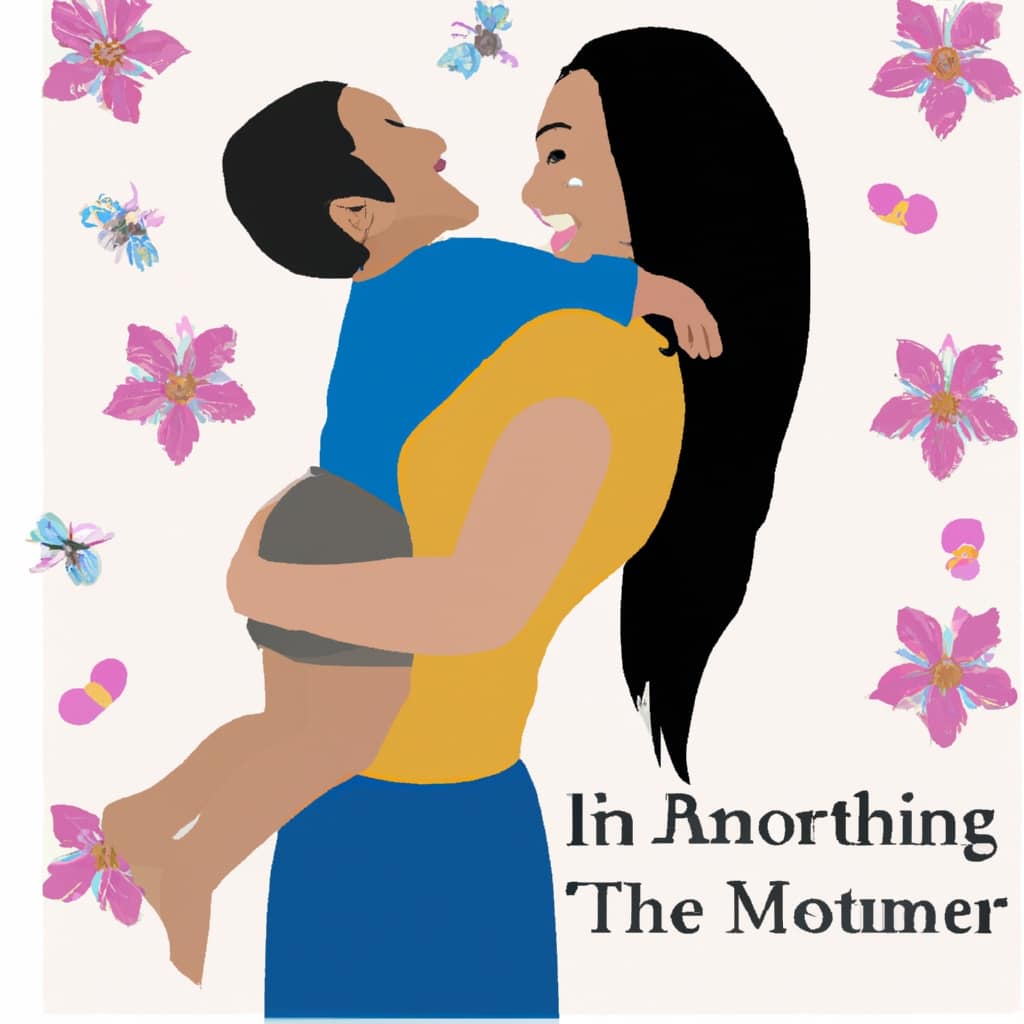
Overall, using non-toxic paints and responsibly sourced wood in Waldorf toys is essential for the well-being of children and the environment.
Essential Woodworking Tools for Creating Waldorf Toys
Using a coping saw, chisels, drill, and carving knives are essential for creating precise Waldorf toys. These tools allow for shaping and smoothing wood, cutting shapes, creating holes, and bringing designs to life.
In addition to these tools, measuring instruments like a ruler, tape measure, and square are crucial for precise woodworking. These instruments help ensure accurate measurements and precise cuts.
By using these tools, we can create Waldorf toys that meet the standards of craftsmanship and promote open-ended play. Open-ended play is an important aspect of Waldorf toys, as it encourages imagination, creativity, and problem-solving skills in children.
Precise woodworking tools and measuring instruments play a vital role in crafting high-quality Waldorf toys that promote open-ended play and provide children with endless opportunities for exploration and creativity.
Understanding the Philosophy Behind Waldorf Toys
By embracing natural materials, open-ended play, and sensory development, I can gain a deeper understanding of the philosophy behind Waldorf toys.
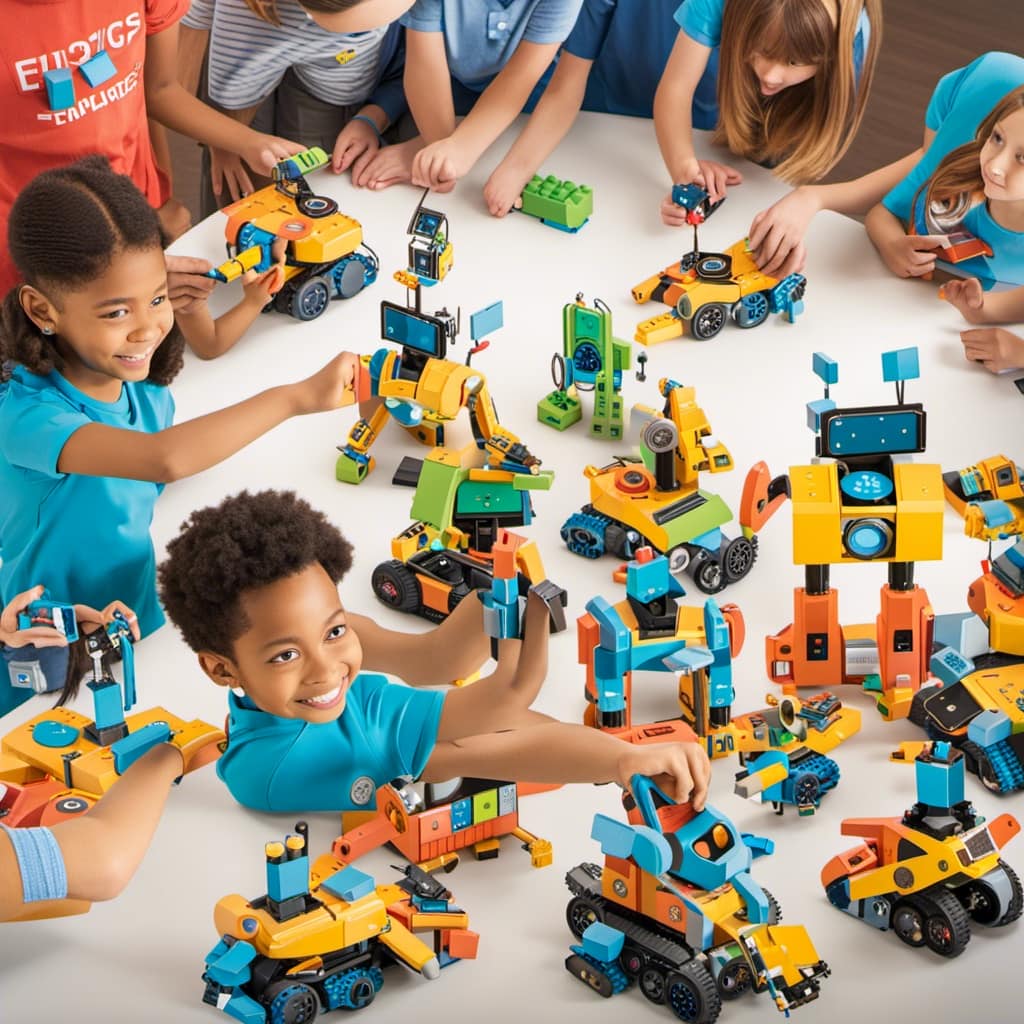
Waldorf toy benefits: Waldorf toys are known for their numerous benefits. They promote imaginative play, creativity, and emotional expression. They also stimulate problem-solving skills and foster a connection with nature.
Sensory development in Waldorf toys: The use of textures, shapes, and natural materials in Waldorf toys enhances sensory development in children. The tactile experience of wooden blocks or the softness of a woolen doll stimulates the senses and encourages exploration.
Holistic child development: The philosophy behind Waldorf toys emphasizes the importance of holistic child development. By incorporating natural materials and promoting open-ended play, these toys support the physical, emotional, and cognitive growth of children.
Understanding the philosophy behind Waldorf toys allows us to make informed choices that benefit children’s development in multiple ways.
Exploring Different Types of Waldorf Toys
Exploring the different types of Waldorf toys reveals their unique characteristics and benefits. Waldorf toys encompass a wide range of options, including dolls, animals, vehicles, and building blocks. These toys are designed to promote open-ended play, allowing children to use their imagination and creativity to engage in endless possibilities.
The use of natural materials, such as responsibly sourced wood, wool, and cotton, is a key aspect of Waldorf toy philosophy. Woodworking techniques are often employed to craft these toys, ensuring they are sturdy and durable.

The benefits of open-ended play with Waldorf toys are numerous, as it encourages problem-solving skills, fosters creativity, and stimulates sensory development. By providing children with these types of toys, we can support their holistic growth and development.
Safety Considerations in Making Waldorf Toys
When making Waldorf toys, I prioritize safety by using child-safe materials and securely attaching any small parts to prevent potential choking hazards. To ensure the safety of the toys, I also consider child-friendly finishes and promote sensory development in toy making.
Here are three key safety considerations in making Waldorf toys:
-
Use child-friendly finishes: I choose non-toxic paints, stains, and dyes that are safe for children to come into contact with. These finishes should be free from harmful chemicals and VOCs, ensuring that the toys are safe for children to play with.
-
Securely attach small parts: It is crucial to securely attach any small parts, such as buttons or beads, to prevent them from detaching and becoming a choking hazard. I use strong adhesives or sewing techniques to ensure that all components are securely in place.
-
Promote sensory development: Waldorf toys aim to stimulate a child’s senses and promote sensory development. I incorporate different textures, shapes, and natural materials like wood, wool, and cotton to engage children’s senses and enhance their sensory exploration and development.

Gathering Natural Materials for Sustainable Toys
After considering the safety considerations in making Waldorf toys, let’s now shift our focus to the importance of sourcing sustainable materials and the benefits of using natural materials in toy making.
When it comes to creating eco-friendly toys, it is crucial to gather natural materials that are safe for children and promote a healthier environment. By opting for responsibly sourced wood, like birch or maple, known for their strength and longevity, we ensure that our toys are not only durable but also sustainable. Additionally, using non-toxic paints and dyes enhances the eco-friendly aspect of the toys.
Natural materials such as wood, wool, and cotton not only provide aesthetic appeal but also offer tactile experiences and sensory development for children. By choosing sustainable materials, we contribute to a more sustainable future while providing children with toys that are safe, engaging, and environmentally friendly.
Personalizing Waldorf Toys With Decorative Techniques
I can personalize Waldorf toys by incorporating decorative techniques like embroidery, appliqué, and fabric painting.
These personalizing techniques allow me to create unique and one-of-a-kind toys that reflect the child’s personality and interests.
By adding embroidery, I can create intricate designs and patterns on the toy’s fabric surface.

Appliqué allows me to add fabric shapes and layers to enhance the toy’s visual appeal.
Fabric painting gives me the freedom to add vibrant colors and details to the toy’s surface.
These personalizing techniques not only make the toys more visually appealing but also promote eco-friendly designs by using non-toxic materials and reducing waste.
It’s a wonderful way to create personalized and sustainable toys that children will cherish for years to come.
Incorporating Natural Dyes and Pigments in Waldorf Toys
Using natural dyes and pigments adds a vibrant and eco-friendly touch to the coloring of Waldorf toys. Not only do they create beautiful colors, but they also provide sensory development opportunities for children. By incorporating plant-based pigments, we can enhance the tactile experience of the toys and stimulate the senses.
Natural dyes, such as those derived from fruits, vegetables, and flowers, are safe and non-toxic, making them ideal for children’s toys. They offer a wide range of color variation, allowing for endless possibilities in creating unique and visually appealing toys.
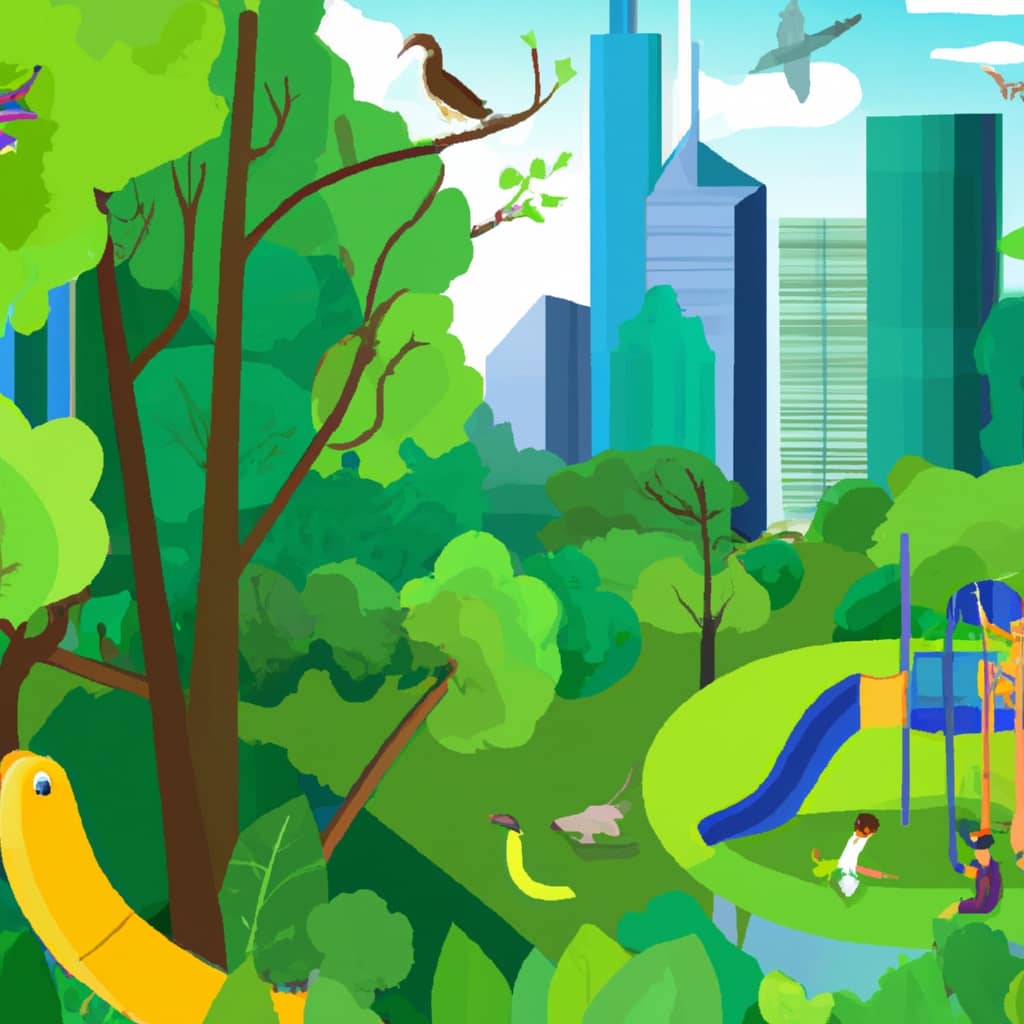
Additionally, using natural dyes aligns with the philosophy of Waldorf toys, which emphasizes the use of natural materials and promotes a connection with the environment. By choosing natural dyes, we can create toys that are not only aesthetically pleasing but also environmentally friendly.
Balancing Synthetic Materials in Waldorf Toy Making
Balancing synthetic materials in the making of Waldorf toys allows for a wider range of options while still maintaining the essence of natural beauty and sensory stimulation.
Synthetic vs natural materials: By incorporating synthetic materials alongside natural ones, we can create toys that are more durable and versatile, while still prioritizing the safety and environmental benefits of natural materials. This balance allows for a greater variety of colors, textures, and shapes in the toys.
Impact of materials on the environment: When using synthetic materials, it’s crucial to choose ones that are eco-friendly and have a minimal impact on the environment. Opting for recycled or biodegradable synthetics can help reduce waste and promote sustainability.
Finding the right balance: The key is to strike a balance between synthetic and natural materials, ensuring that the toys remain safe, stimulating, and aesthetically pleasing. By doing so, we can create Waldorf toys that meet the needs of children while also considering the impact on the environment.
Following Safety Guidelines in Waldorf Toy Creation
In my journey to create eco-friendly Waldorf toys, I have realized the importance of following safety guidelines. Ensuring that the toys we make are safe for children is of utmost importance. We must use child-safe materials that are non-toxic and free from harmful chemicals. To help you understand the safety measures better, here is a table that highlights some child-safe materials commonly used in Waldorf toy making:
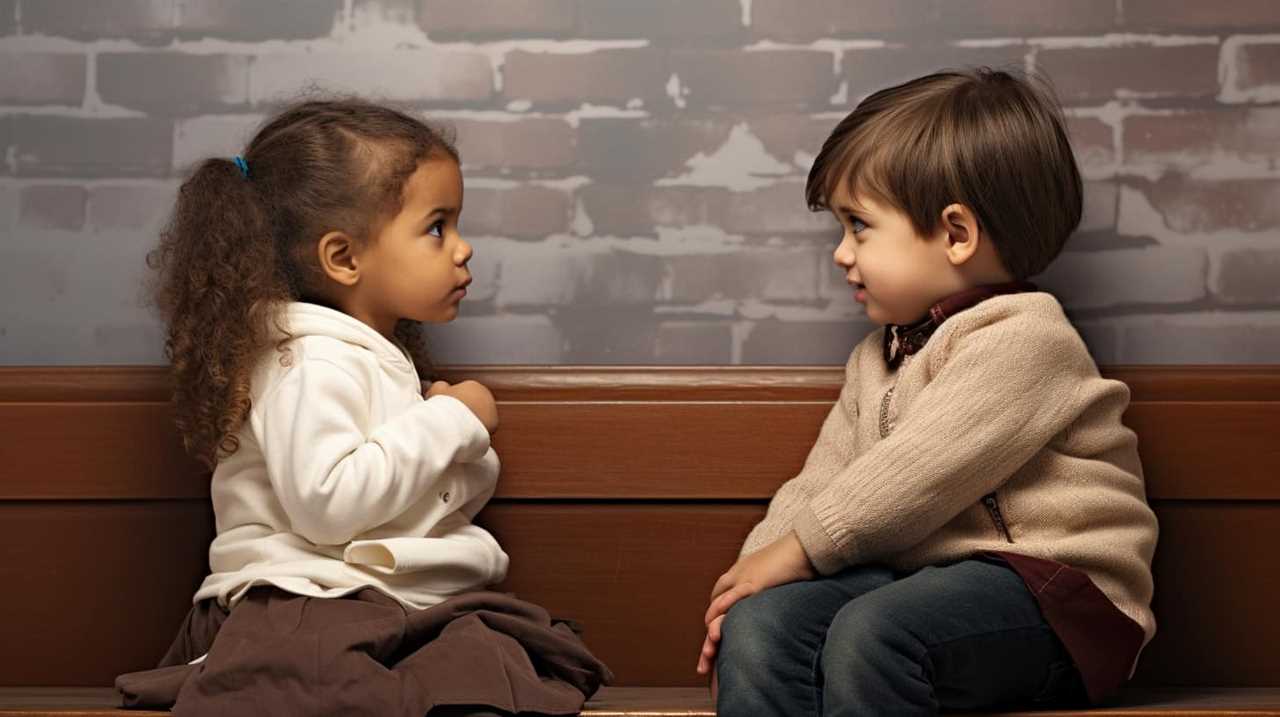
| Material | Safety Measure | Benefits |
|---|---|---|
| Wood | Choose responsibly sourced wood | Durable and non-toxic |
| Wool | Use natural wool that is free from synthetic additives | Soft and hypoallergenic |
| Cotton | Select organic cotton that is free from pesticides | Breathable and gentle on skin |
Introducing Waldorf Toys to Foster Creativity and Imagination
When introducing Waldorf toys to children, I love seeing how their creativity and imagination soar. These toys have a special way of fostering imaginative play and promoting sensory development.
Here are three key benefits of introducing Waldorf toys to children:
-
Enhanced creativity: Waldorf toys encourage children to use their imagination and engage in open-ended play. With simple designs and natural materials, these toys allow children to explore and create their own stories and scenarios.
-
Sensory stimulation: Waldorf toys are often made from natural materials such as wood, wool, and cotton, which provide different textures and sensory experiences. Playing with these toys can help children develop their sense of touch and engage their senses in a holistic way.
-
Emotional expression: Through imaginative play with Waldorf toys, children have the opportunity to express their emotions and develop empathy. Dolls, animals, and other Waldorf toy types can become companions for children, providing a safe space for them to explore their feelings and develop social skills.
Frequently Asked Questions
What Are Some Alternative Measuring Methods That Can Enhance Accuracy in Woodworking?
Some alternative measuring methods that can enhance accuracy in woodworking include digital calipers, laser distance meters, and angle finders. These tools provide precise measurements and help ensure precision woodworking techniques.
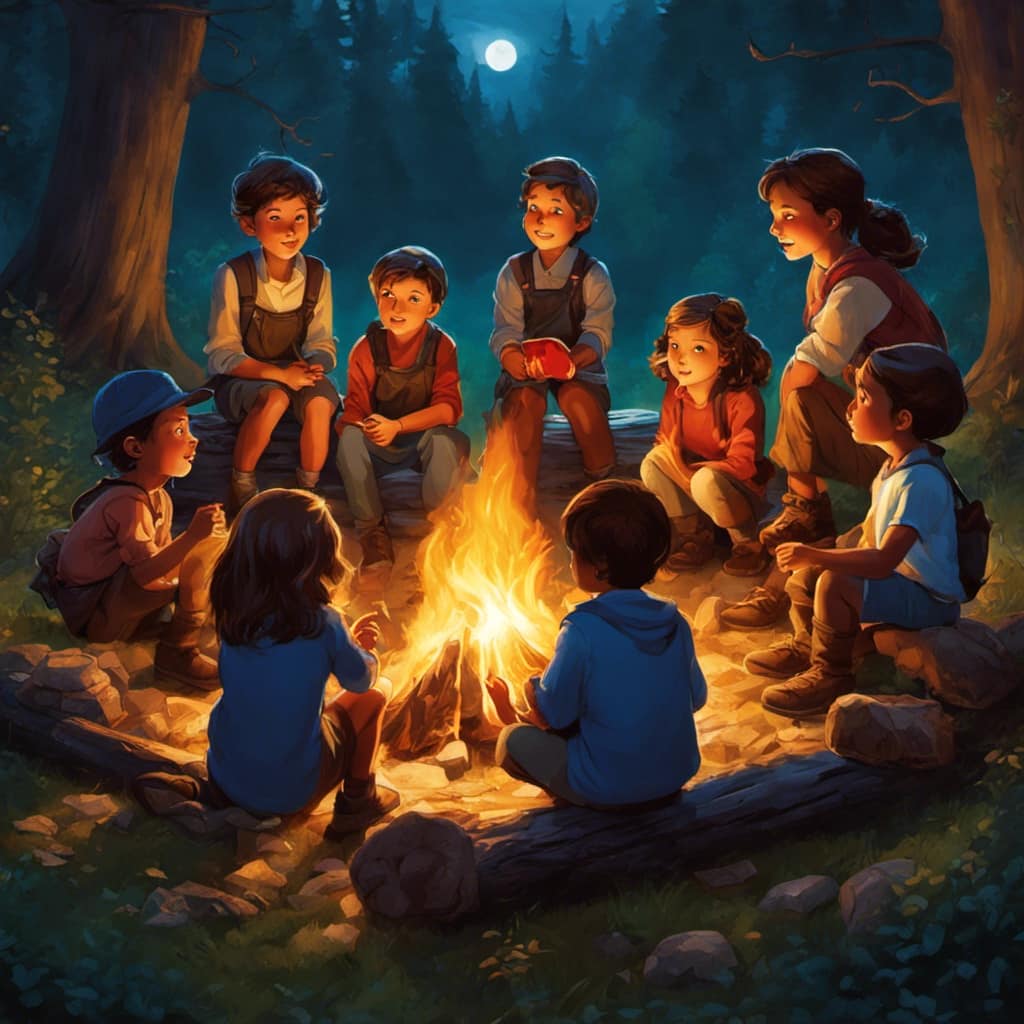
How Can Synthetic Materials Be Balanced With the Essence of Waldorf Toy Making?
To balance synthetic materials with the essence of Waldorf toy making, consider using them sparingly and in conjunction with natural materials. This preserves the philosophy of sustainability while adding variety and durability to the toys.
What Are Some Recommended Safety Guidelines to Follow When Creating Waldorf Toys?
When creating Waldorf toys, it is important to follow recommended safety guidelines and take safety precautions. This includes using child-safe materials, securely attaching small parts, and considering the recommended age range for the toys.
What Are Some Decorative Techniques That Can Be Used to Personalize Waldorf Toys?
To personalize Waldorf toys, you can use various decorative techniques. Painting techniques, such as woodburning tools or fabric painting, can add unique designs. Embroidery options, like stitching a child’s name, can also add a personal touch.
How Can Waldorf Toys Stimulate the Senses With Natural Materials?
Waldorf toys stimulate the senses with natural materials, like wood, wool, and cotton, which provide different textures and sensations. These materials encourage sensory development and engage children in a tactile and immersive play experience.
Conclusion
In conclusion, creating eco-friendly Waldorf toys is not just about using sustainable materials and tools. It is also about embracing a philosophy that promotes imaginative play and sensory development.
By choosing responsibly sourced wood, non-toxic paints, and safe materials, we can ensure the safety of our children and the environment. With essential woodworking tools and measuring instruments, we can craft precise and beautiful toys.
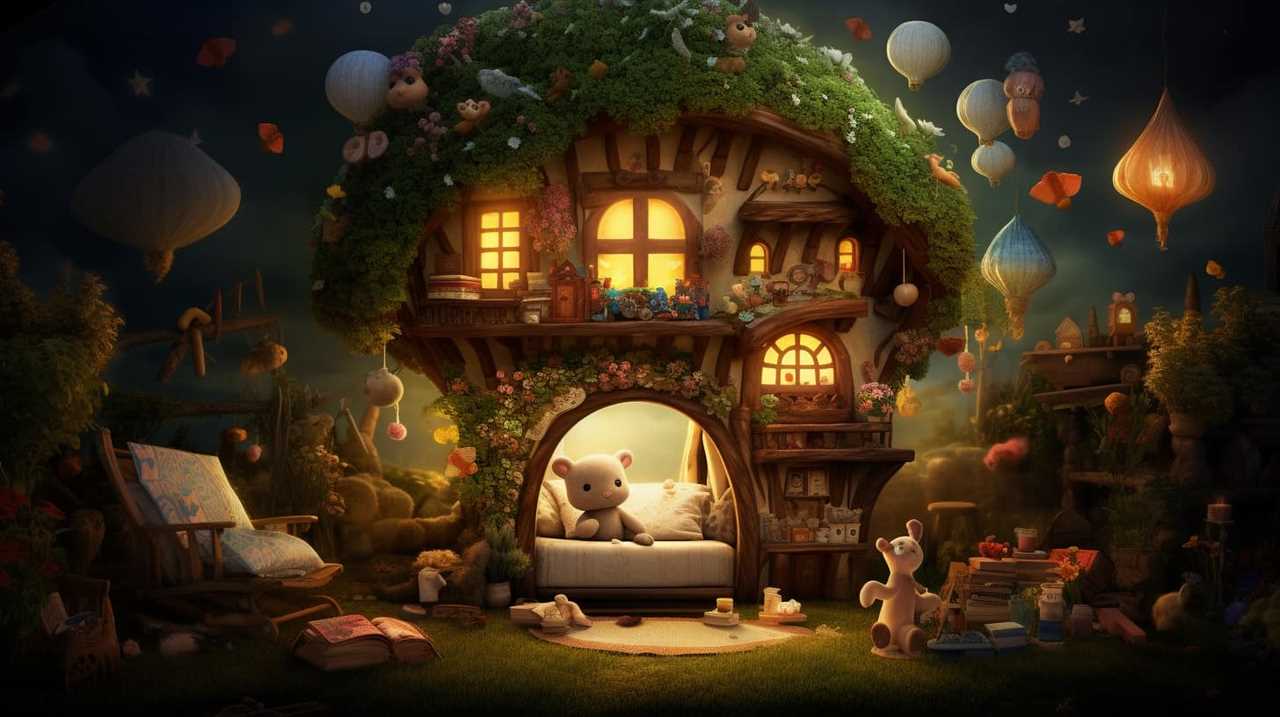
Furthermore, by understanding the philosophy behind Waldorf toys, we can foster creativity and imagination in children. Let us embark on this journey of creating eco-friendly Waldorf toys, where sustainability and holistic development come together in harmony.


